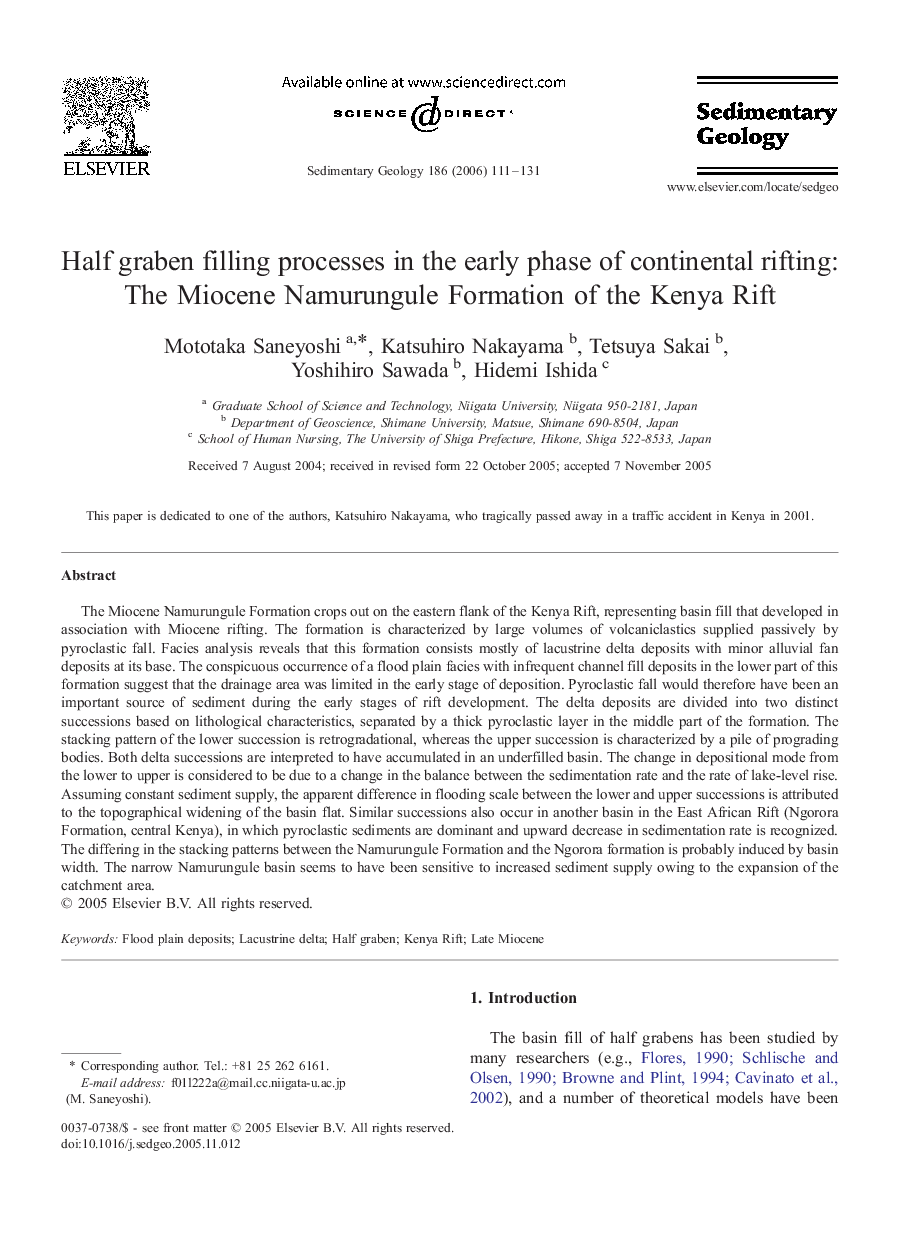| کد مقاله | کد نشریه | سال انتشار | مقاله انگلیسی | نسخه تمام متن |
|---|---|---|---|---|
| 4691040 | 1636188 | 2006 | 21 صفحه PDF | دانلود رایگان |
عنوان انگلیسی مقاله ISI
Half graben filling processes in the early phase of continental rifting: The Miocene Namurungule Formation of the Kenya Rift
دانلود مقاله + سفارش ترجمه
دانلود مقاله ISI انگلیسی
رایگان برای ایرانیان
موضوعات مرتبط
مهندسی و علوم پایه
علوم زمین و سیارات
فرآیندهای سطح زمین
پیش نمایش صفحه اول مقاله

چکیده انگلیسی
The Miocene Namurungule Formation crops out on the eastern flank of the Kenya Rift, representing basin fill that developed in association with Miocene rifting. The formation is characterized by large volumes of volcaniclastics supplied passively by pyroclastic fall. Facies analysis reveals that this formation consists mostly of lacustrine delta deposits with minor alluvial fan deposits at its base. The conspicuous occurrence of a flood plain facies with infrequent channel fill deposits in the lower part of this formation suggest that the drainage area was limited in the early stage of deposition. Pyroclastic fall would therefore have been an important source of sediment during the early stages of rift development. The delta deposits are divided into two distinct successions based on lithological characteristics, separated by a thick pyroclastic layer in the middle part of the formation. The stacking pattern of the lower succession is retrogradational, whereas the upper succession is characterized by a pile of prograding bodies. Both delta successions are interpreted to have accumulated in an underfilled basin. The change in depositional mode from the lower to upper is considered to be due to a change in the balance between the sedimentation rate and the rate of lake-level rise. Assuming constant sediment supply, the apparent difference in flooding scale between the lower and upper successions is attributed to the topographical widening of the basin flat. Similar successions also occur in another basin in the East African Rift (Ngorora Formation, central Kenya), in which pyroclastic sediments are dominant and upward decrease in sedimentation rate is recognized. The differing in the stacking patterns between the Namurungule Formation and the Ngorora formation is probably induced by basin width. The narrow Namurungule basin seems to have been sensitive to increased sediment supply owing to the expansion of the catchment area.
ناشر
Database: Elsevier - ScienceDirect (ساینس دایرکت)
Journal: Sedimentary Geology - Volume 186, Issues 1â2, 15 April 2006, Pages 111-131
Journal: Sedimentary Geology - Volume 186, Issues 1â2, 15 April 2006, Pages 111-131
نویسندگان
Mototaka Saneyoshi, Katsuhiro Nakayama, Tetsuya Sakai, Yoshihiro Sawada, Hidemi Ishida,